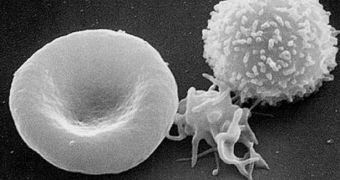Experts from the Monash Immunology and Stem Cell Laboratories have recently managed to bring the goal of creating fully functional, mature red blood cells from stem cells a bit closer. They designed a line of human embryonic stem cells (hESC) to become fluorescent only when it is differentiated into RBCs, and then watched the process happening. The research was led by professors Andrew Elefanty and Ed Stanley, together with colleagues from the Murdoch Children's Research Institute.
In the new study, which appears in the latest issue of the respected scientific journal Nature Methods, the team details how the new fluorescent method could help experts working in the field of hESC research understand exactly how differentiation occurs. This evolution is of tremendous importance, if the power of stem cells is to be harnessed for creating red blood cells. The new line has been dubbed ErythRED, with “eryth” coming from the scientific name for RBCs, erythrocytes.
These cells are the main conduits through which oxygen from the lungs is delivered throughout the body. The double-concave cells lack a nucleus and protein-synthesizing abilities, but they carry the extremely important chemical known as hemoglobin, which specifically binds to oxygen. Once blood rushes through the lungs, oxygen is drawn to hemoglobin, which gives it its trademark red color. Then, pumped by the heart, the blood flows all over the body, separating from its cargo as it passes through the capillaries, before returning to the lungs for another shipment.
In the new fluorescence method, the hemoglobin in red blood cells only begins to glow in the dark after the cells have differentiated from their initial hESC form. By looking at the cells, and at the time when the compound begins to shine, researchers can potentially get a better idea of how differentiation starts, and how it continues until the end-result is achieved, e! Science News reports.
“Not only will the ErythRED cell line lead to more efficient creation of red blood cells from human embryonic stem cells, but these cells are a crucial tool for monitoring the behavior of the cells when transplanted into animal models,” Professor Andrew Elefanty explains. “The elegant work of the Elefanty-Stanley group unlocks the entrance to the long sought and elusive differentiation pathway that leads to expression of adult hemoglobin genes,” the Scientific Director of the Australian Stem Cell Center (ASCC), Professor Joe Sambrook, concludes.

 14 DAY TRIAL //
14 DAY TRIAL //